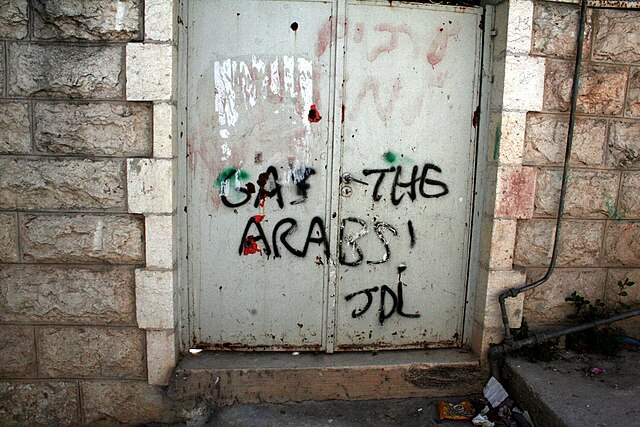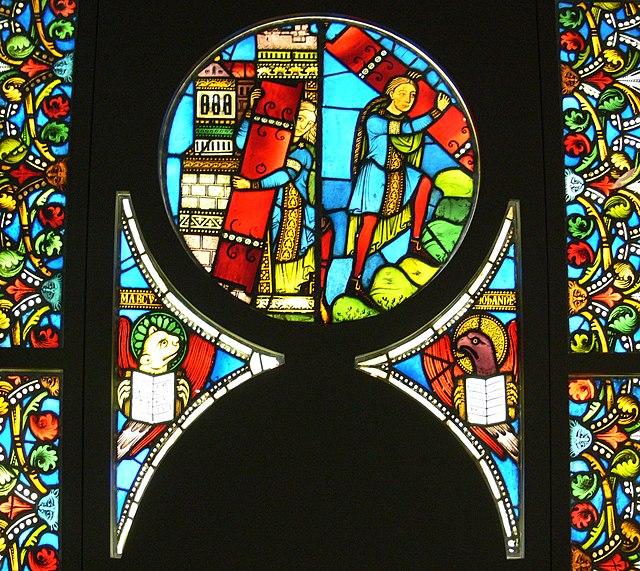Tel Rumeida , also known as Jabla al-Rahama and referred to by Israeli settlers as Tel Hebron is an archaeological, agricultural and residential area in the West Bank city of Hebron. Within it, lies a tell whose remains go back to the Chalcolithic period, and is thought to constitute the Canaanite, Israelite and Edomite settlements of Hebron mentioned in the Hebrew Bible and Second Temple period literature.
Excavations at Tel Rumeida
Palestinians are routinely searched by Israeli soldiers as they pass Tel Rumeida
Playground at Tel Rumeida
"Gas the Arabs" painted on the gate outside a Palestinian home in Hebron by Israeli settlers
Hebron is a Palestinian city in the southern West Bank, 30 kilometres (19 mi) south of Jerusalem. Nestled in the Judaean Mountains, it lies 930 metres (3,050 ft) above sea level. The second-largest city in the West Bank, and the third-largest in the Palestinian territories, it had a population of 201,063 Palestinians in 2017, and seven hundred Jewish settlers concentrated on the outskirts of its Old City. It includes the Cave of the Patriarchs, which Jewish, Christian, and Islamic traditions all designate as the burial site of three key patriarchal/matriarchal couples. The city is often considered one of the four holy cities in Judaism as well as in Islam.
Downtown Hebron
Excavations at Tel Rumeida
Samson removes gates of Gaza (left) and brings them to Mount Hebron (right). Strassburg (1160–1170), Württemberg State Museum in Stuttgart
Cave of the Patriarchs







